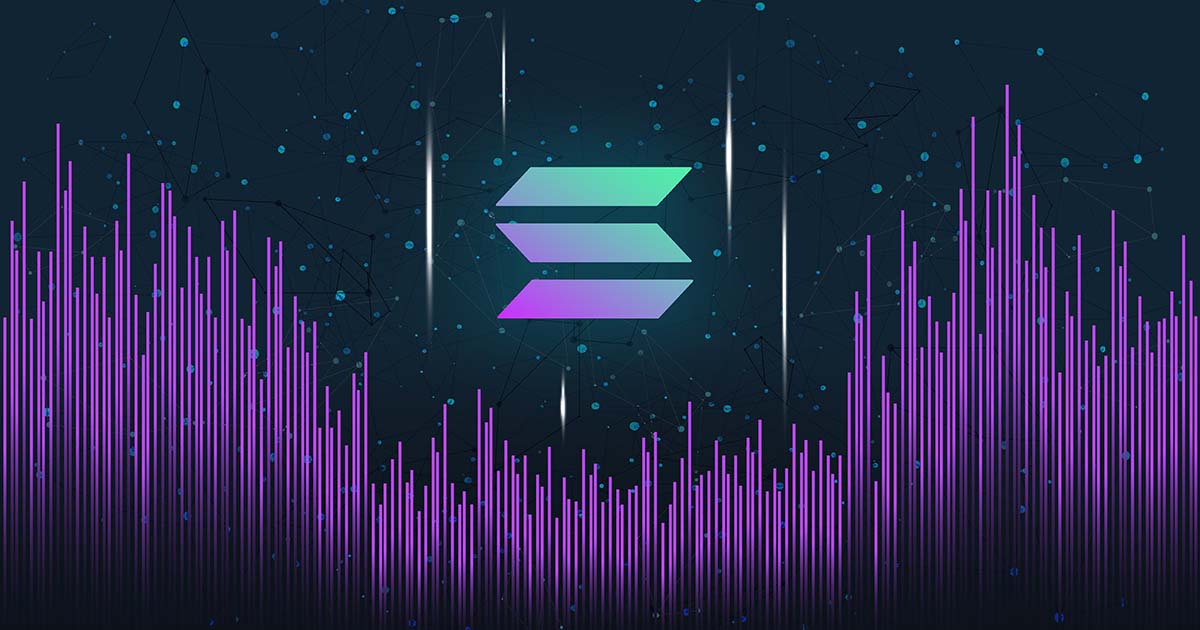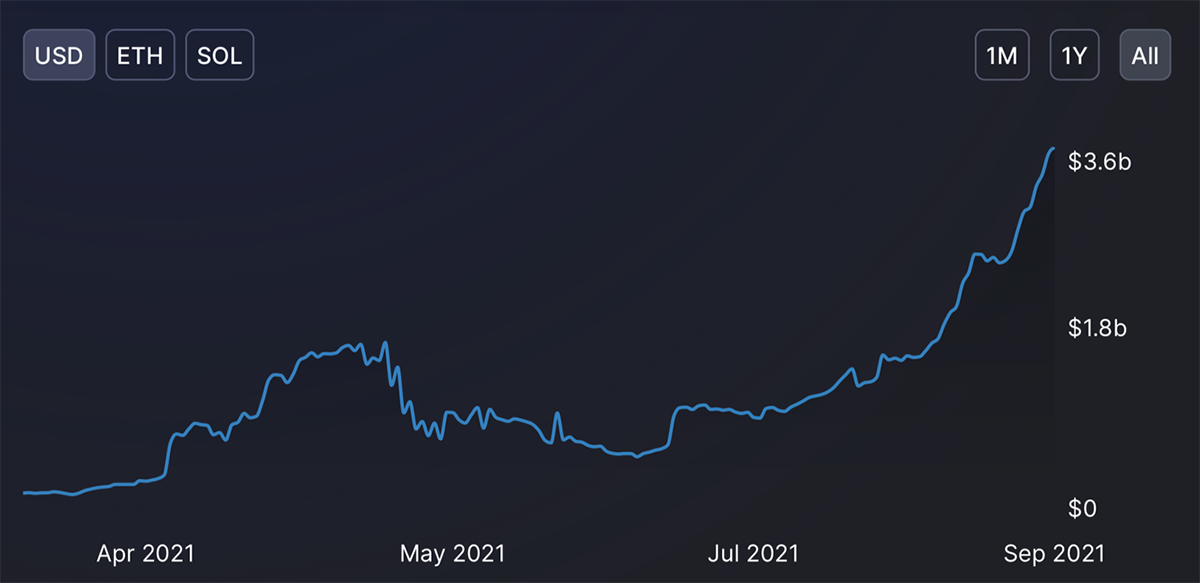A Solid Performance

Disclaimer: Your capital is at risk. This is not investment advice.
Token Takeaway: SOL;
Over the past week, one group of digital assets stood out in our in-house models: ‘Ethereum Killers’. These are blockchains that specialise in housing applications such as decentralised exchanges or lending protocols.
The term often splits opinion within the space, while I am inclined to see these ‘killers’ as essential blockchains which work in conjunction with Ethereum. Rather than a winner takes all, think of it as an interoperable scenario. Just like the social media giants, there are big players.
While this week will focus on the Solana blockchain and its native token SOL, readers should be aware of the ‘Ethereum killers’ trend since several assets such as DOT, ATOM, EGLD, and KSM have appeared too. However, we chose SOL due to its parabolic growth into the top 10 digital assets after launching in March last year.
Sector: Layer 1, Smart Contracts, Protocol-level, DAPPS
Solana is an open-source, programmable, proof-of-stake (PoS), single layer protocol blockchain. Ultimately it aims to solve the scalability trilemma, which some might argue has yet to be cracked. The scalability trilemma states that for a blockchain to be decentralised, scalability and security will have to suffer – finding the right balance is the key.
Solana has also expressed intent to democratise the global financial system, in essence cementing itself as a contender with Ethereum’s decentralised finance (DeFi) dominance.
While unproven relative to Ethereum, Solana’s native token SOL is surrounded by very positive sentiment. SOL’s role relates to the settlement layer, meaning all network transactions can only be broadcasted through paying with SOL. This is the same as ETH’s role in the Ethereum system; a transactional fee utility.
However, due to proof-of-stake, SOL generates further value for its holders by enabling them to stake on the network.
The Team, Partnerships and Funding
The team behind Solana is fantastic and perhaps has not received the media attention that it deserves. Much of the core team, including the CEO and Co-Founder, come from Qualcomm and Dropbox. Other team members boast equally prestigious backgrounds from the likes of Square, Google, Omada, Intel, Binance and Consensys. It does not get better than this.
Partnerships are impressive from the crypto-side, Circle, Tether, Alameda and FTX’s Sam Bankman Fried. On the other hand, the traditional world partnerships aren’t as extensive if we are not counting the fundraising participates.
Solana’s funding sets it up to succeed. Funding rounds lead and funded by companies such as A16z, Multicoin Capital, Polychain Capital, and Coinshares combine to raise a total of $335m, according to Crunchbase. Considering Solana is just over a year old, this is a staggering number.
The Ecosystem

In the main, Solana has started by focusing development on decentralised exchanges, DeFi and non-fungible tokens (NFTs). This is a smart move considering the size and growth rate of these sectors in the space. Raydium, Saber and Serum are the main automated market makers (AMM) and DEXs on Solana, with a combined TVL of around $2.5bn. According to Solana, Serum alone has had $4.6bn transacted through it since inception and typically has $80m of daily volume.
Readers should be aware that the volume and TVL of Solana’s DeFi is minuscule in comparison to Ethereum - not that this won’t change, but it is not close to a challenger in the major sectors. Maximalists might cite the significant capacity of Solana’s possible transactions per second (65,000tps), but as we have seen time and time again, this only matters if the blockchain can generate enough value for its users through well-constructed protocols.
Solana has grown in market cap and support this quickly due to its eight defining features. For example, Proof of History (not a consensus method) is separate from its PoS mechanism but governs the synchronisation of the Solana blockchain validators. Slightly geeky, perhaps, but an enormous positive for the strength of its blockchain.
While I acknowledge there are seven other features, they are outside the scope of this article and more for a wider report.
SOL Token
The SOL token is like any other native utility token when it comes to settling transactional fees. The staking feature is slightly more niche due to Solana being a proof-of-stake blockchain. However, the most valuable separator (and value generator) is the utility generated by protocols incorporated in its ecosystem. Readers should monitor the growth of Solana, as the correlation will become ever more apparent.
An interesting feature of the SOL token is its sticker price guarantee, which was a promise to all who took part in their original CoinList token sale. Essentially, should the market price drop below the token sale price of $0.220, all eligible participants can sell their SOL tokens back to Solana for 90% value, which is $0.198 (if they stake for a year). It looks like SOL has a price base, albeit far below the current market value.
Conclusion
Solana has performed unbelievably well in a short amount of time, but it is also in the most competitive sub-section of digital assets. Success is not guaranteed so therefore continued development, funding, continued faults with Ethereum and a bit of pot luck are needed to make this a real contender.
Overall, Solana’s current state may disrupt Ethereum’s dominance in the digital asset space, but it is not ready to overtake Ethereum in terms of disrupting the traditional world. That is the difference between good and great.
More on Solana in part II

Comments ()